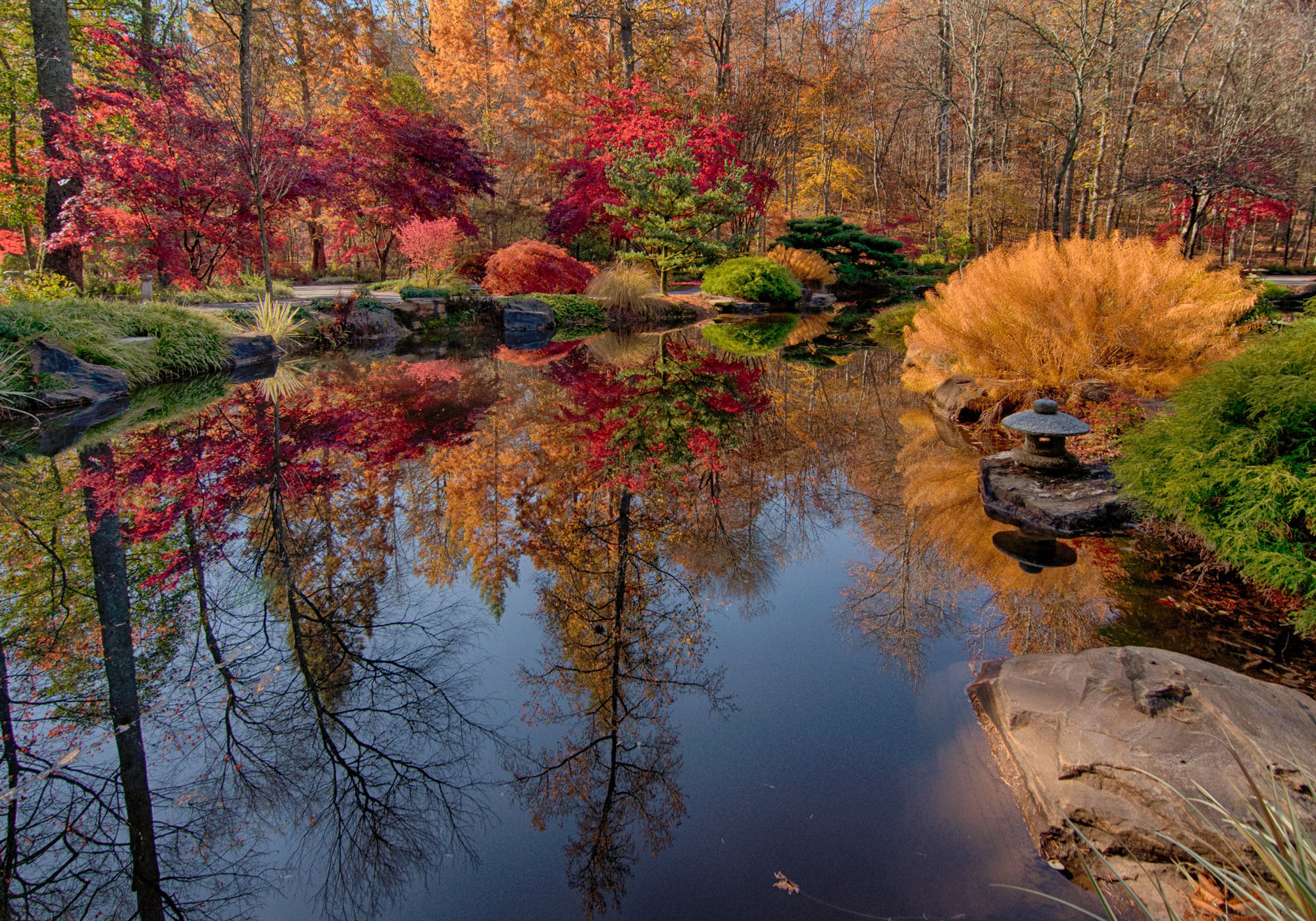Have The Japanese Maples Turned At Gibbs Garden
Fall is in full swing, and Japanese maples are the stars of the garden. With their ever-changing beauty, Japanese maples have captured the hearts of gardeners and poets for hundreds of years. These ornamental trees offer four seasons of beauty in the landscape. Crimson new growth in spring, followed by bright green leaves (certain cultivars have red leaves) in summer and a spectacular display in autumn of brilliant foliage in shades of orange, red and yellow. In winter, striking silhouettes create living sculptures.
There are hundreds of cultivars of Japanese maples, each with its own distinct charm. Selections include those that are weeping, upright, dwarf and even miniature. Japanese maples make beautiful specimen trees in the landscape but will also grow happily in decorative pots. They are popular subjects for training as bonsai, a way of directing the growth of trees and shrubs through pruning to maintain them as miniature versions of their mature counterparts.
At Gibbs Gardens, there are more than 3,000 Japanese maples, including hundreds of varieties. Most are selections of Acer palmatum or Acer japonicum, planted throughout the 220 acres. Many are planted in the Japanese Gardens, sited next to ponds, where they create dramatic reflections.
Japanese maples make good companions when planted in combination with other shrubs, trees and perennials, including azaleas and flowering cherries. A colorful grouping for autumn includes the perennial Arkansas blue star, Amsonia hubrichtii (with foliage that turns golden in fall),Camellia sasanqua 'Yuletide' and conifers of various shades of green.

Gibbs Gardens
A few Japanese maples for Southern Gardens
Acer japonicum 'Aconitifolium' -Known as the Full Moon maple, this tree grows 20 to 30 feet tall and has dissected leaves that are deeply lobed. The leaves turn crimson in fall.
Acer palmatum 'Bloodgood'- This small rounded tree grows 15 to 20 feet tall with leaves that are deep reddish-purple. Noted for its excellent red fall color.
Acer palmatum var. dissectum 'Crimson Queen'- This small tree grows 10 to 12 feet tall and has delicate foliage that retains its crimson color throughout the growing season, turning bright scarlet in the fall.
Acer palmatum 'Ryusen'- This striking, weeping maple grows 20 feet tall and 6 to 8 feet wide. One of the last maples to exhibit fall color, it turns orange in November.
Acer palmatum 'Sangu Kaku' - Named for its coral colored bark, especially noticeable on new growth, this tree grows 20 to 25 feet tall. The leaves emerge yellow-green with reddish margins in the spring and are green all summer. In autumn, the foliage turns yellow-gold.

Gibbs Gardens
Tips for Growing Japanese Maples
1. Plant Japanese maples in full sun or part shade.
2. Water them during periods of drought.
3. Prune when trees are dormant in late fall to mid-winter.
4. Fertilize in spring before new leaves emerge.
To view Japanese maples in their fall splendor, visit Gibbs Gardens during Japanese Maples Colorfest in October and November. The Gardens are open Wednesday through Sunday from 9 a.m. to 4 p.m.
Have The Japanese Maples Turned At Gibbs Garden
Source: https://www.exploregeorgia.org/things-to-do/blog/japanese-maples-brilliant-stars-of-fall-landscapes
Posted by: hansontruckly.blogspot.com

0 Response to "Have The Japanese Maples Turned At Gibbs Garden"
Post a Comment